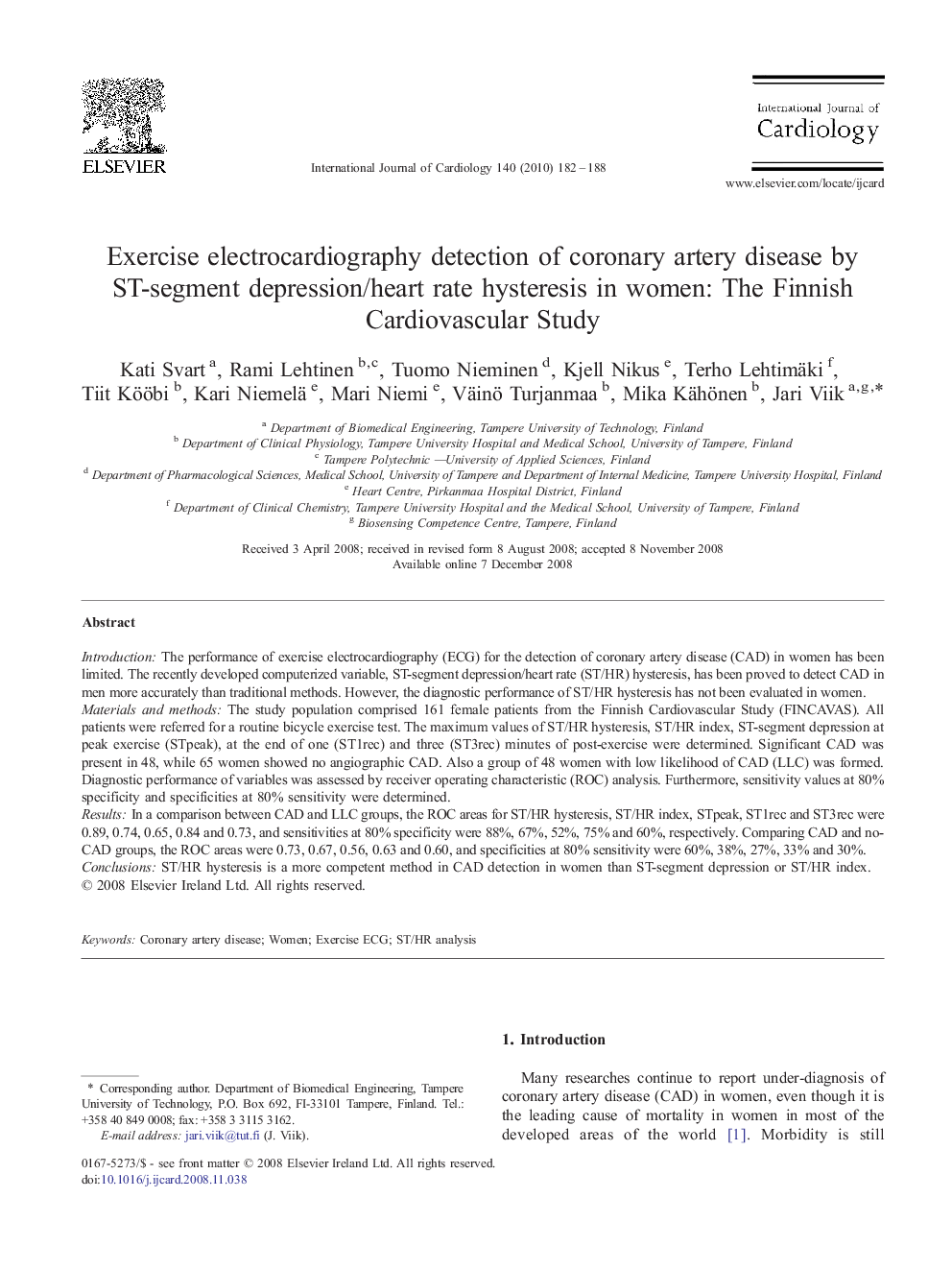| Article ID | Journal | Published Year | Pages | File Type |
|---|---|---|---|---|
| 2932289 | International Journal of Cardiology | 2010 | 7 Pages |
IntroductionThe performance of exercise electrocardiography (ECG) for the detection of coronary artery disease (CAD) in women has been limited. The recently developed computerized variable, ST-segment depression/heart rate (ST/HR) hysteresis, has been proved to detect CAD in men more accurately than traditional methods. However, the diagnostic performance of ST/HR hysteresis has not been evaluated in women.Materials and methodsThe study population comprised 161 female patients from the Finnish Cardiovascular Study (FINCAVAS). All patients were referred for a routine bicycle exercise test. The maximum values of ST/HR hysteresis, ST/HR index, ST-segment depression at peak exercise (STpeak), at the end of one (ST1rec) and three (ST3rec) minutes of post-exercise were determined. Significant CAD was present in 48, while 65 women showed no angiographic CAD. Also a group of 48 women with low likelihood of CAD (LLC) was formed. Diagnostic performance of variables was assessed by receiver operating characteristic (ROC) analysis. Furthermore, sensitivity values at 80% specificity and specificities at 80% sensitivity were determined.ResultsIn a comparison between CAD and LLC groups, the ROC areas for ST/HR hysteresis, ST/HR index, STpeak, ST1rec and ST3rec were 0.89, 0.74, 0.65, 0.84 and 0.73, and sensitivities at 80% specificity were 88%, 67%, 52%, 75% and 60%, respectively. Comparing CAD and no-CAD groups, the ROC areas were 0.73, 0.67, 0.56, 0.63 and 0.60, and specificities at 80% sensitivity were 60%, 38%, 27%, 33% and 30%.ConclusionsST/HR hysteresis is a more competent method in CAD detection in women than ST-segment depression or ST/HR index.
